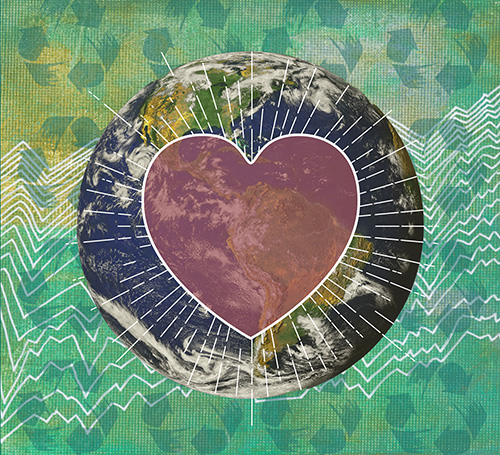Tekoporã
State of Pernambuco, Brazil – Tabajara lands
Our shop will be on a break between January 4th – January 23rd. All orders placed between these dates will be processed on our return. Thank you!
We are gloriously, inescapably earthbound and yet we disregard our home at our own peril.
Our world is calling out, louder than ever, to wake up, listen deeply, and come into the right relationship with our land to save what we have left and plant the seeds for a thriving future.
The truth is that climate action and sustainable stewardship of our natural resources are essential for our survival here on Earth.
We can no longer turn our heads and ignore what we don’t want to see. It’s time to change.
How will we honour and care for our Mother?
#STWEnvironment

We are gloriously, inescapably earthbound and yet we disregard our home at our own peril.
Our world is calling out, louder than ever, to wake up, listen deeply, and come into the right relationship with our land to save what we have left and plant the seeds for a thriving future.
The truth is that climate action and sustainable stewardship of our natural resources are essential for our survival here on Earth.
We can no longer turn our heads and ignore what we don’t want to see. It’s time to change.
How will we honour and care for our Mother?
#STWEnvironment
State of Pernambuco, Brazil – Tabajara lands
“Areito: Taino Voices” is an Indigenous virtual monthly gathering that features two different invited Taino guest speakers each month ranging from artists, activists, teachers, academics,
Back to Earth is an artistic and innovative project showing the importance of the Sierra Nevada de Santa Marta [Santa Marta’s snow-capped mountain range], located
Romania – Turtle island
Wuru Taino Tekiro’uo is a grassroots initiative dedicated to the revitalization and celebration of Taino language, culture, and identity. Our mission is to create decolonial
STONO is an interspecies performance in which participants are guided to explore the 1739 Stono Slave Rebellion through the voices of its beyond-human participants. This
Climate change has emerged as the undisputed story of our time, even of all humanity. But we don’t know how to talk about it. And the story is so overwhelming, we don’t get to talk about storytelling. In Hot Take, Mary Annaïse Heglar and Amy Westervelt take an intersectional, critical, but constructive look at climate coverage—with the ultimate goal of making the conversation more productive and powerful. Not just bigger, but more
Passionate about ocean life, a filmmaker sets out to document the harm that humans do to marine species – and uncovers alarming global
Reclaiming the Commons: Biodiversity, Indigenous Knowledge, and the Rights of Mother Earth lays out the scientific, legal, political, and cultural struggle to defend the sovereignty of biodiversity and indigenous knowledge. Corporate war on nature and people through patents and corporate Intellectual Property Rights has unleashed an epidemic of biopiracy resulting in important legal battles fighting efforts to patent the rights to many plants, including basmati, neem, and wheat. The author presents details of the specific attempts made by corporations to secure these patents and the legal actions taken to fight them. The book goes beyond the legal struggle to position the necessary solutions to corporate control including exploring the Rights of Nature and proposing a framework for a Universal Declaration of the Rights of Mother Earth. It is the first detailed legal history of the international and national laws related to biodiversity and Intellectual Property
Robin Wall Kimmerer is an acclaimed botanist who blends her scientific studies with her Indigenous upbringing. She says there is much to be learned about how to interact respectfully with the earth, from the behaviour of
EcoWatch is a long-time leader in environmental news. Founded in 2005 as an Ohio-based environmental newspaper, today we are a digital platform still dedicated to publishing quality, science-based content on environmental issues, causes, and solutions. While we’ve grown from a grassroots newspaper of 80,000 print copies to a site with a digital audience of more than two million monthly readers, we are still committed to our founding principle: creating a sustainable
Every year billions of products are sold around the world in plastic packaging. But some countries lack a waste system to collect and recycle or dispose of the rubbish. The result can be that waste is dumped, set on fire or used as an accelerant in domestic fires.;